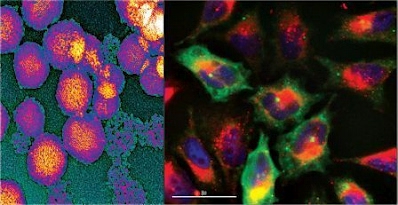-
The diagnosis and treatment of major diseases is becoming increasingly reliant on synthetic materials. Understanding the interaction of synthesized materials with living systems is therefore an important problem. While a great deal of attention has been given to making new biologically relevant materials, systematic studies needed to understand such interactions are limited. Certainly, materials, especially those with nanostructured interfaces, can be developed to exhibit enhanced biological activity by utilizing insight from such studies. We believe that a major leap forward in developing new nanomaterials for biomedical applications can be achieved only by probing the material properties systematically to formulate new design rules.

- Our overall research goal is thus; to elucidate the effect of manipulating nanomaterial properties at the molecular level on their interaction with cells and finally applying them in the development of nanostructures with enhanced bioactivity for applications in tissue engineering, drug delivery and bimedical implants/sensors. We are interested in probing some fundamental questions about the nanomaterial-cell interaction, especially how does the molecular structure of its building blocks affect its bioactivity. For instance, how are the bio-properties such as tissue and cellular internalization, targeting efficiency, toxicity, and clearance of polymer NPs affected by structural aspects such as stereochemistry, tacticity, or rigidity of the polymeric nanostructured building blocks? Projects in our lab can be broadly categorized into the following sub-areas:

Structure-bioactivity relationships:
- The goal is to create nanostructures based on optimization of molecular and nanoscale interactions of the material with cells. We rely on studies elucidating which properties of a material crucially affect bioactivity at the molecular level.

New functional nanomaterials:
- We seek to develop “smart” nanoparticle-based delivery vehicles, imaging agents and biosensors to diagnose and treat diseases based on the knowledge obtained from the “structure-activity” studies.
|